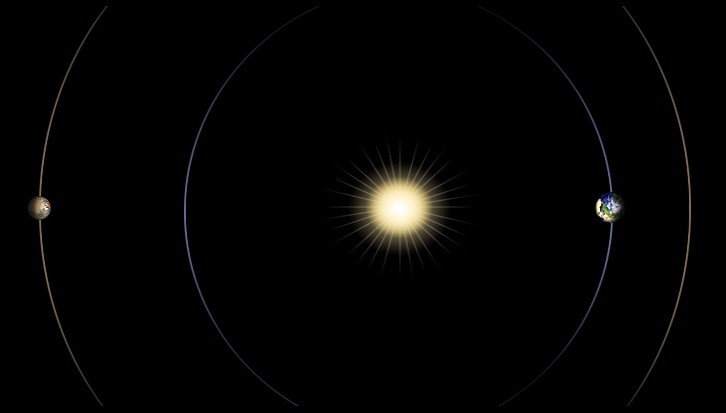NASA plans to suspend most activities on its Mars missions in a few days for safety reasons related to the position of the planet. This "vacation" should last about two weeks. However, all of these robots will be able to perform some "alone" operations on Mars while waiting for the return of communications with ground crews.
A solar conjunction occurs when the Sun comes between two celestial objects. Next October 7 , and like about every two years , Mars will move behind our star from Earth's perspective. The hot outer atmosphere of the Sun, located in the line of sight, can then seriously disturb interplanetary communications . This is the reason why space vehicles must imperatively cease all communication with the ground teams at the risk of corrupting the mission because of erroneous instructions.
NASA has several machines in the Martian system:three orbiters, two rovers, a lander and a helicopter. According to the US agency, these missions will stop sending commands and raw images between October 2 and 16 . Note that the next solar conjunction will obviously affect the other missions (Europe, China and India). However, their "resting" schedule has not been disclosed.

Going back to the American missions, if they will therefore stop communicating with the Earth, NASA has said that it will however load its various robots with "duties" to perform by themselves while waiting for "back to school".
The Perseverance rover will, for example, perform weather measurements and radar experiments, and listen for environmental sounds with its microphone. Ground crews have already found the best "parking spot" to perform these operations, "between the dunes and a rocky outcrop “, tweeted the rover account. Ingenuity should remain stationed about 175m from Perseverance.
The Curiosity rover will also take weather measurements. He will also monitor surrounding radiation levels and keep an eye out for dust demons. Present on Mars since 2012, Curiosity is not at its first conjunction. And so far, it has not encountered any major problems.
Hovering, the InSight lander will perform a passive experiment. Its seismometer will indeed be operational to continue to capture the earthquakes of the red planet.
The three orbiters, Odyssey, Mars Reconnaissance Orbiter (MRO) and Mars Atmosphere and Volatile Evolution Mission (MAVEN), will also continue to collect scientific information. This data will be stored and sent to Earth as soon as the planetary alignment is more favorable. From then on, the engineers will download this information for about a week thanks to the Deep Space Network, a huge system of radio antennas intended for missions in deep space.